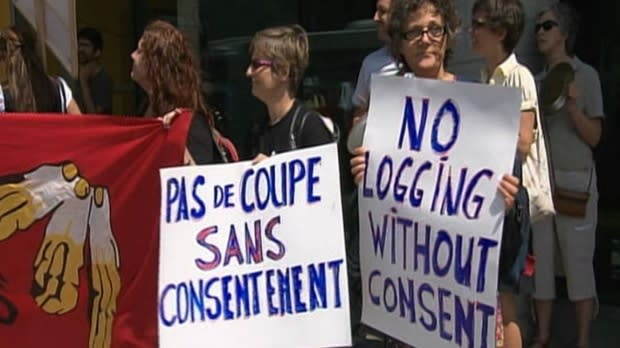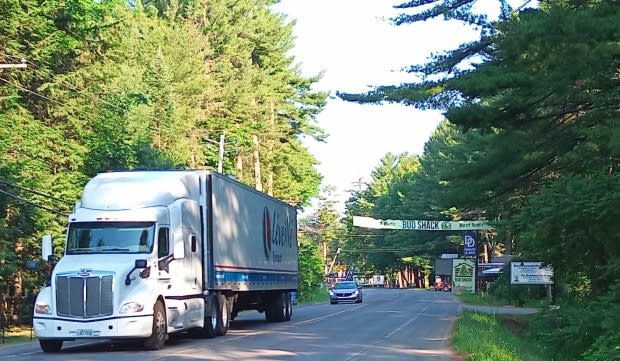Point of View: The Oka Crisis — looking forward after 30 years
I don't want to rehash details of the Oka Crisis. I learned about fear and betrayal, learned to accept things I never wanted to believe. I have no wish to relive that 78-day nightmare. Let journalists and politicians relive the good old days and pick at the bones of a bygone episode in Canadian history.
I know why people did what they did 30 years ago. I've thought about it long enough. What people should be concerned about today is why it's likely to happen again.
Let's begin with the comfortable bubble Quebec has erected around itself: a bubble made of myths and wishful thinking.
First myth: Quebec believes it has a better, healthier and more respectful relationship with Indigenous peoples than does any other place in Canada. After all, I've been told, who did the coureurs des bois marry? Don't most Québécois have Indian blood?
Second myth: Quebec shares with Indigenous peoples a history of oppression by the English. This avoids confronting the slavery of Indigenous peoples in New France long before the English took over.
Final myth for today: don't we share aspirations to be nations independent from Canada?
My conversations with Quebec nationalists identify several conditions to nationhood that we're supposed to have in common: a unique language, distinct culture, identifiable territory, a system of governance, and our own laws and customs.
I'll admit to those similarities but never to shared aspirations with Quebec nationalists. Mohawks, along with most Indigenous peoples in Quebec, never sold or surrendered any of the above. Mohawks want treaties with the Crown fulfilled — not torn up.
My point is that Quebec has used these and other myths to avoid self-examination and to hide a history of abusive relationships with Indigenous peoples.
This allowed Quebec to pretend that it had nothing to learn from the Royal Commission on Aboriginal Peoples, created in 1991 specifically to study deep-rooted issues raised by the Oka Crisis about the broken relationship between Indigenous peoples and Canada — including Quebec.
Viens inquiry came decades late
There were other missed opportunities, too.
In the past 32 years, there have been major inquiries into allegations of the racist and often violent treatment of Indigenous peoples by police and the justice system: in Nova Scotia in 1989, in Manitoba in 1991, and in Ontario in 2007.
Quebec had nothing to learn about similar abuses at home, apparently — so it thought, until Indigenous women in Val-d'Or went public in 2015 with complaints of sexual and physical abuse by Surêté du Québec officers.
Hundreds of other stories surfaced after the province struck its own inquiry in late 2016 into the treatment of First Nations, Inuit and other Indigenous peoples, led by retired Superior Court Justice Jacques Viens. Viens concluded there is a historic pattern of systemic discrimination and institutional bias across Quebec.
The bubble I describe allows for collective amnesia: denial of a former premier's promise to "bulldoze" the Cree into oblivion to make way for the James Bay hydroelectric project, violent police raids to deny Mi'kmaq fishing rights at Restigouche, and the province's betrayal of an agreement with Algonquin that would have restricted clear-cut logging on harvesting grounds near Barrière Lake, north of Maniwaki.

It's historical context that isn't taught in Quebec history classes or journalism schools. Instead, a sanitized version is hammered into students, decade after decade.
At Kanehsatake, the narrative preferred by journalists, Oka's mayor, and maybe most people in Quebec is a more familiar one about criminal Mohawk warriors, illegal and unregulated drugs, guns and tobacco.
It's the one the present mayor, Pascal Quevillon, uses to whip up anti-Mohawk sentiments in the good citizens of Oka, threatening yet another "Oka Crisis."
I've heard similar calls to action all my life.
It's the same call that put my grandmother in jail, when she challenged a Belgian immigrant who wanted to chop down the Pines. It's the same call that placed a bounty on the head of my great-grandfather, Joseph Kanawatiron Gabriel, for cutting timber on his own land without the permission of the Sulpician priests.
It didn't matter the charge. The real crime was being Mohawk.
Mohawk money helps pay for Oka

Oka is the old Mohawk village of Kanehsatake until it wasn't anymore, until the Sulpicians forced out Mohawk families and sold their farms out from under them.
Ottawa helps Oka pay for fire protection, garbage collection and road maintenance, by giving the municipality nearly $1 million a year in lieu of property taxes for the few Mohawk properties in the village because, according to Ottawa, those Mohawks are living there by the grace of the federal government, on Crown land.
Apart from those accumulated millions, we discovered a few years ago, the federal Indigenous Services department sent Oka nearly $200,000 to help build a youth centre, although it serves almost no Mohawk young people.

Every day, thanks to an economy based on tobacco and cannabis sales, money flows from Kanehsatake into Oka and the surrounding area, into big box and grocery stores, hardware and building supply outlets, garages, restaurants and fast-food joints.
A restaurant owner in a neighbouring town told me that his contract to provide meals for the Emergency Response Unit at Kanehsatake during this pandemic gave his small business the boost it needed to survive.
Now consider what would happen if the Mohawk took their money out of Oka. What if Ottawa stopped sending Mohawk dollars there, as well? How many of Oka's businesses could survive? How much of the municipality's budget would be left?
Oka is a small town dependent on tourism, seasonal agro-tourism and — here's the kicker — Mohawk money.
But you never hear about stuff like that because it doesn't fit into the nice, comfortable bubble that Quebec created, full of myths based on familiar stereotypes about Indigenous peoples dependent on handouts and taxpayer dollars.
Some things worth resisting
Such ignorance and arrogance created conditions for a perfect storm of anti-Mohawk hatred 30 years ago when a small group of people stood in the Pines and said, "Enough. No more."
The Oka Crisis of 30 years ago was about land and blockades, masked warriors and weapons, a pair of communities surrounded by police, and more soldiers sent to southern Quebec than Canada sent to the first Gulf War in Kuwait.
But it was also about the stubborn refusal of one First Nation to allow the mayor next door to bulldoze their ancestors for a stupid golf course.
There are some things worth resisting.
It was a hugely traumatic event with international impact and lessons at home for those ready to listen. The Oka Crisis woke up Indigenous peoples across Canada and around the world. It advanced efforts at the United Nations to approve a Declaration on the Rights of Indigenous Peoples.
Quebec had a chance to learn from the Oka Crisis, if only it had launched its own independent inquiry in a timely fashion. It was an opportunity to find a way to heal a relationship with Indigenous peoples poisoned by prejudice and hatred. But it never did.
Instead, when the razor wire came down on Sept. 26, 1990, 78 days after the crisis began, Quebec heaved a collective sigh of relief. It's over. It's done. Time to pull the curtains back and stop the world from looking, judging, finding fault. It's time to get back to normal. Pretend it never really happened.
No wonder things really haven't changed at Kanehsatake in 30 years.



